I never tire of exploring the Santa Ana River bed which passes just little over a mile from my house. Most of the time, it’s dry or at most damp. During protracted rain storms, which happen with less frequency with every passing year, there will be some surface water; but usually the river flows underground.
I’m old enough to remember the floods of ’68 when a month of steady rain turned my playground into a raging torrent of muddy water that swept bridges away and stripped a mile-wide swath of every bit of vegetation. One could hear boulders being rolled towards the sea from a half mile away.
Today it was warm and clear, a perfect day for an exploratory walk. 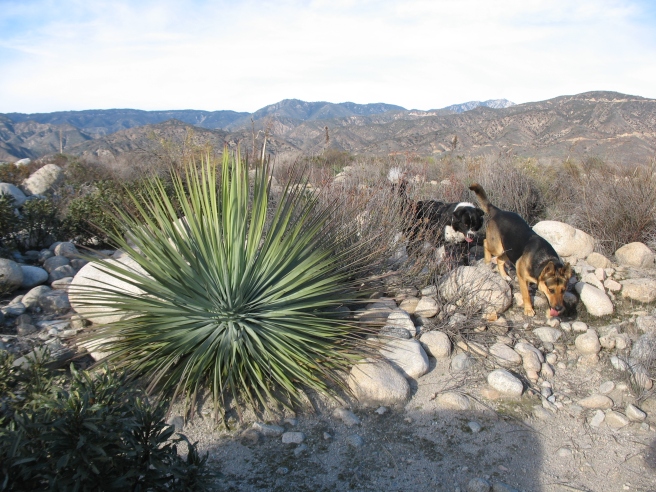
We followed the denuded strip where the water district buried their pipeline a few years ago, looking for the old Cone Camp trail which had been bisected by it. The trail wasn’t obvious anymore but there were numerous wildlife paths that meandered in the general direction we wanted to go.
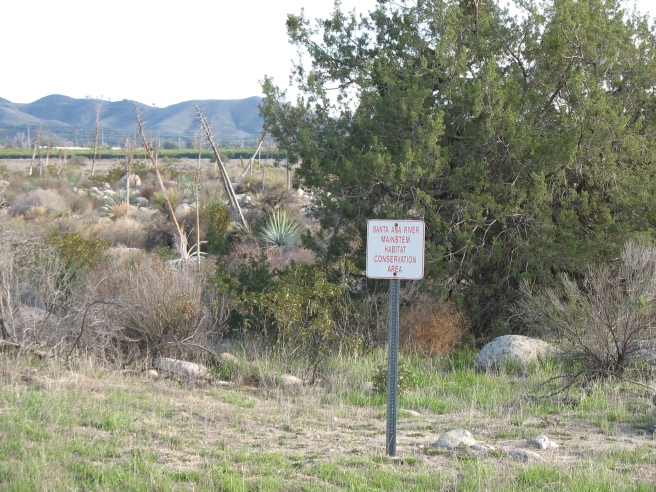 We came to an unusually verdant drainage which appeared to have been designated a habitat conservation area though I never found any other boundary markers.
We came to an unusually verdant drainage which appeared to have been designated a habitat conservation area though I never found any other boundary markers.
Eventually, we came to a remnant the old Cone Camp Road which was washed out in the aforementioned floods of 1968. Following the road we came to what had been the gate and the foundation of the administration building.
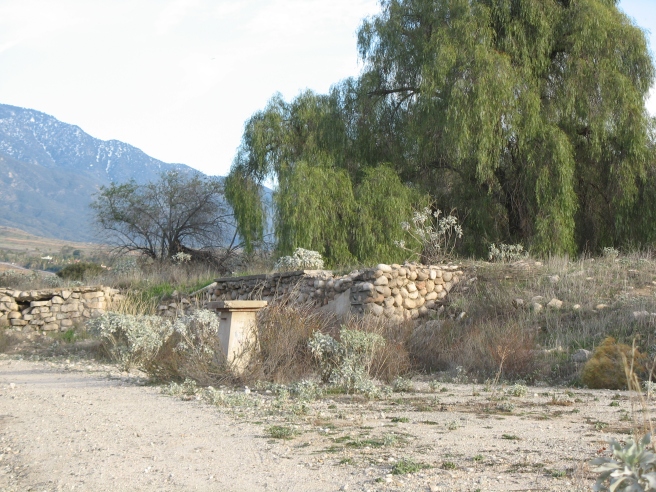
The camp had been built to house migrant works from Mexico who came to this country under the Las Braceros program. The program was established in 1942 when World War II created a labor shortage and immigrants were welcomed into this part of the country to tend the orange groves and other farming concerns.
By the time I started exploring the remains of the camp (in the early seventies), there were only a few dilapidated buildings left standing. Today, there are only foundations, nails, and some remnants of plumbing which suggest the use of each pad.
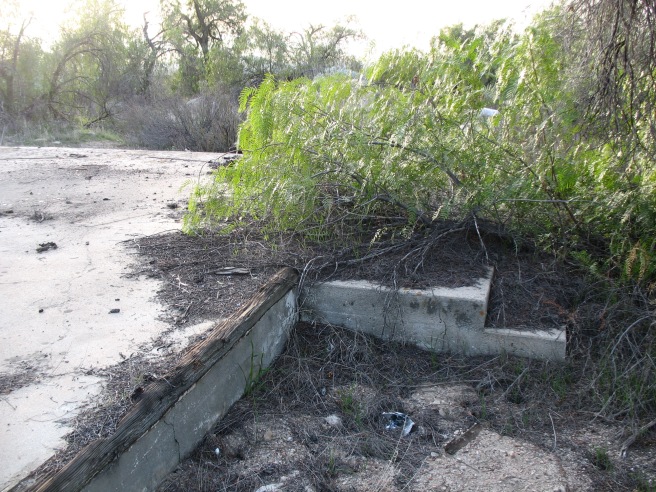
This one, I believe, may have been a barracks. There are slabs that have drains and what were probably showers and others that appear to have been kitchen facilities and dining halls. Most interesting to me, are the little personal touches the builders added, like decorative stones set in the mortar of the steps. It makes me think that the camp may have been built by the laborers who ultimately lived in them.
The U.S. government withheld pension money from the paychecks of the laborers and dutifully remitted it to the Mexican government. When the workers applied for benefits some forty years later, their earnings had evaporated. More information about the camp can be found at http://www.highlandnews.net/news/article_538a31a6-44aa-540b-aa77-0f1befe28ec3.html
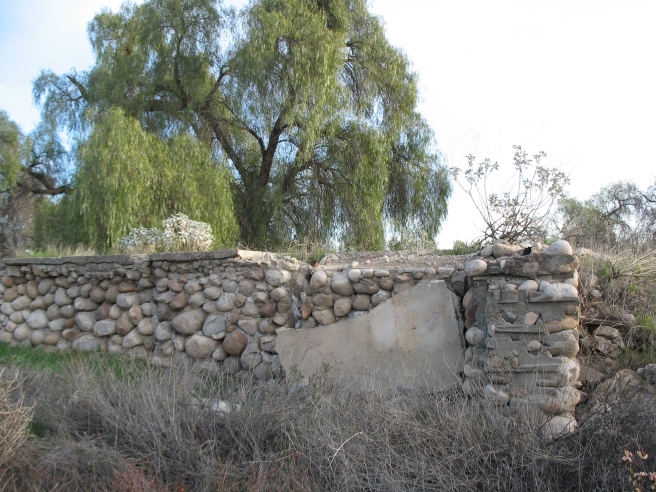
Building materials appear to have been local river rock.
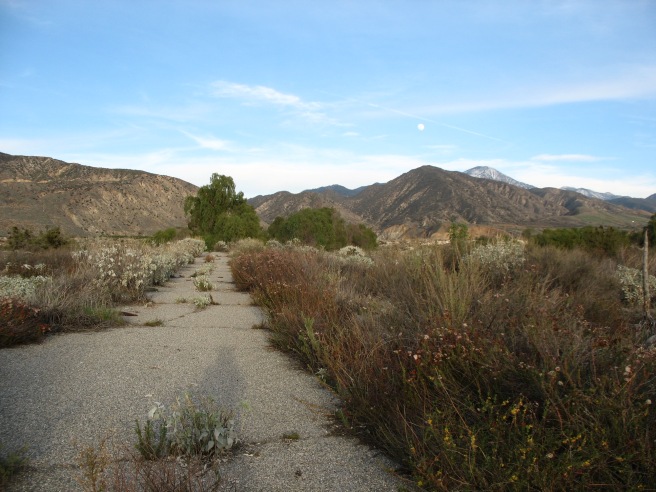
A short stretch of the old pavement remains but ends where the flood ripped through.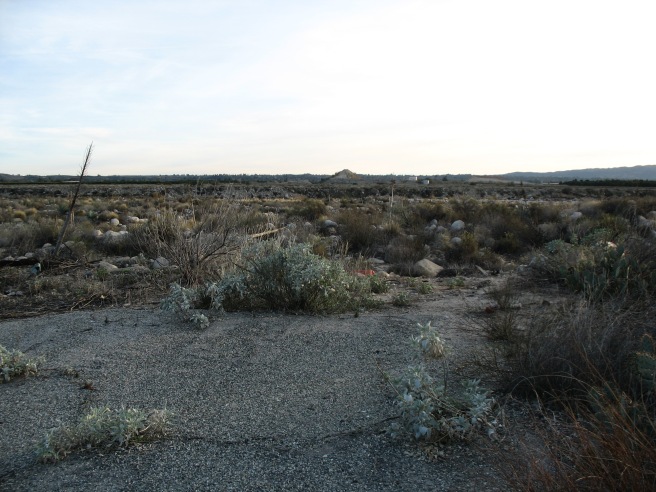
Beyond the road, nature has reclaimed the wash. With every rain storm it recovers its pristine beauty.
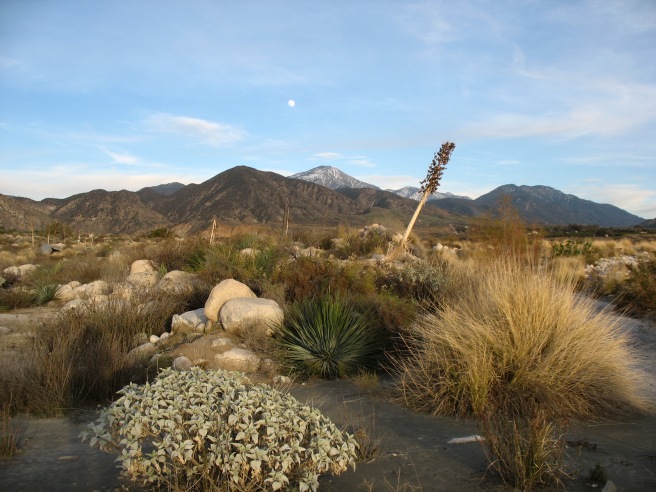

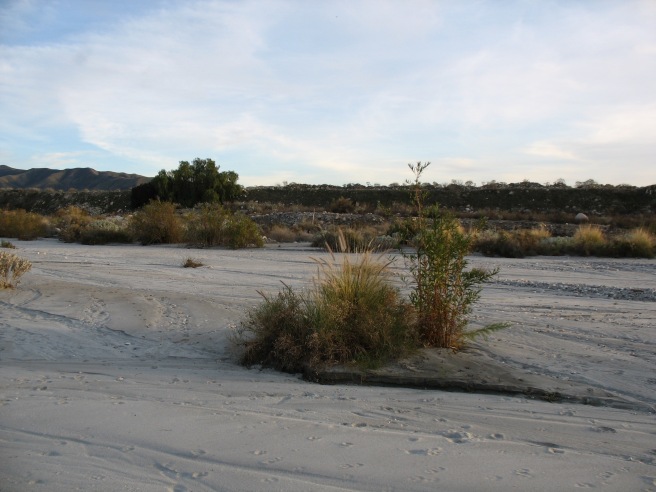

Shake my hand , Judy , I have just posted about a river too .
The yours flows underground in a impressing dry landscape . But in the two cases those rivers bring testimony of the history of the men .
Love ❤
Michel
LikeLike
Rivers are a powerful force in the lives of those who live near them. I’m fortunate to live in a valley cradled by beautiful mountains. The snowmelt from these mountains once provided perennial surface water; but now, the water is diverted into municipal water systems long before it reaches the valley. I often wonder what the wildlife does for water these days.
LikeLike
Oops! I think I failed to click reply and entered the response to your comment as an independent comment.
LikeLike
Thanks Judy for your reply . The vegetation looks like adapted to a dry place . And alas more it is dry more ti will be dry . This is a serious problem . Those who manege the town around should be more attentive to the natual balance of the ecosytem in which you live..
Water id the first of wealth.
Love ❤
Michel
LikeLike
What interesting landscape. So different from where I live. I’d love to hike or ride there.
LikeLike
And after perusing your site, I would love to hike or ride up there. I no longer ride horses but I still ride my mountain bike on trails at least once a week. I’ll bet mountain biking is popular in your neck of the woods, at least in the summertime. Do you ride in a covered arena during the winter months?
LikeLike
RYC : Yes judy the beautiful table are covered of memories of the great familial gathering .
And in up dating my post I added a table, today: the table of the … restaurant where janine and I were for our 55th anniversary! 🙂
Love ❤
Michel
LikeLike